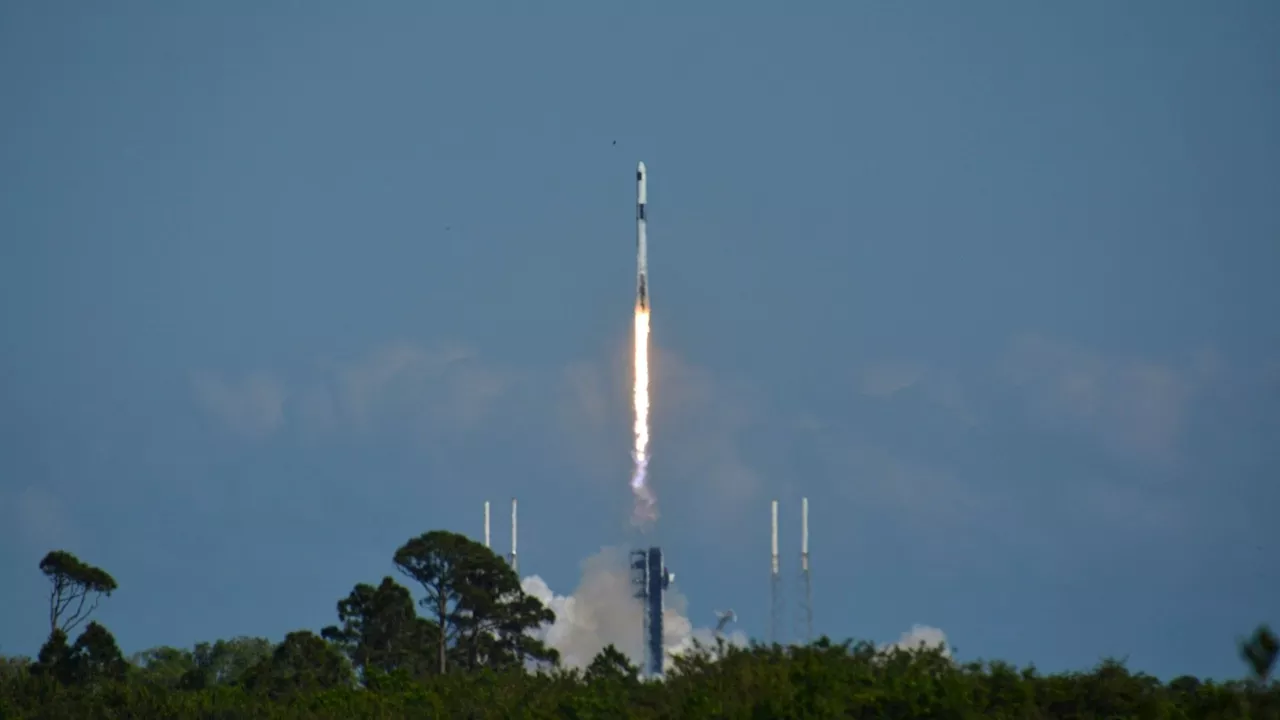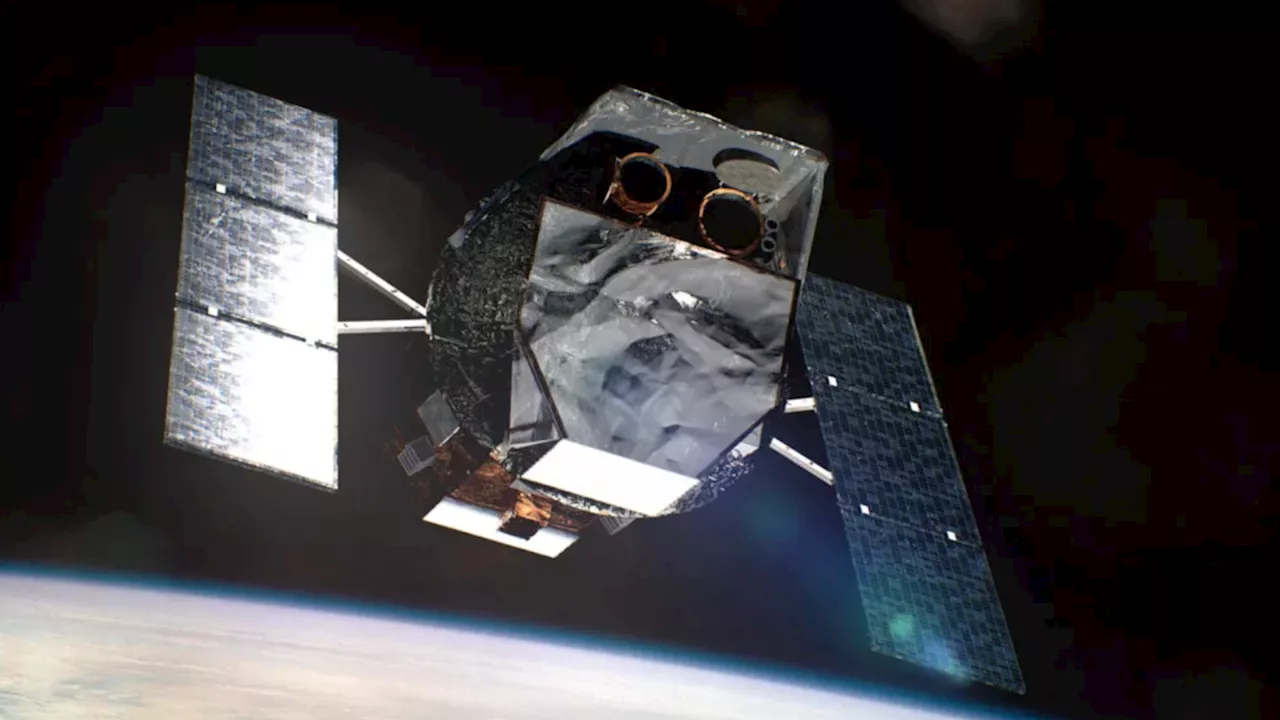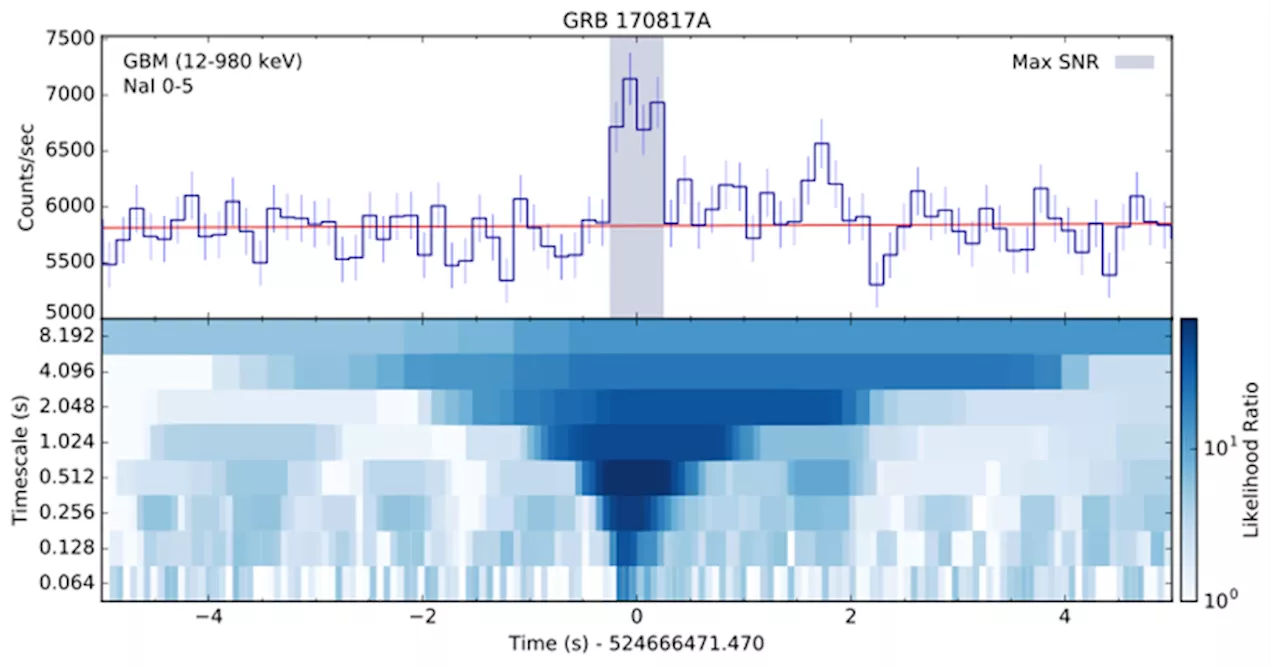The JWST confirms that a supernova was behind the brightest gamma ray burst ever detected. But where are the heavy elements?
This artist's visualization of GRB 221009A shows the narrow relativistic jets that gave rise to the gamma-ray burst and the expanding remains of the original star ejected via the supernova explosion. Credit: Aaron M. Geller / Northwestern / CIERA / IT Research Computing and Data Servicesgamma-ray burst
Now, we detect about one GRB daily, and they’re always in distant galaxies. Astrophysicists struggled to explain them, coming up with different hypotheses. There was so much research into them that by the year 2,000, an average of 1.5 articles on GRBs were published in scientific journals daily. ” The lead author is Peter Blanchard, a Center for Interdisciplinary Exploration and Research in Astrophysics postdoctoral fellow.
This periodic table from the NASA Scientific Visualization Studio shows where the elements come from, though scientists still have some uncertainty. Image Credit: NASA’s Goddard Space Flight Center “It’s not any brighter than previous supernovae,” lead author Blanchard said. “It looks fairly normal in the context of other supernovae associated with less energetic GRBs. You might expect that the same collapsing star producing a very energetic and bright GRB would also produce a very energetic and bright supernova. But it turns out that’s not the case. We have this extremely luminous GRB, but a normal supernova.
“There is likely another source,” Blanchard said. “It takes a very long time for binary neutron stars to merge. Two stars in a binary system first have to explode to leave behind neutron stars. Then, it can take billions and billions of years for the two neutron stars to slowly get closer and closer and finally merge. But observations of very old stars indicate that parts of the universe were enriched with heavy metals before most binary neutron stars would have had time to merge.
“Upon examining the B.O.A.T.’s spectrum, we did not see any signature of heavy elements, suggesting extreme events like GRB 221009A are not primary sources,” lead author Blanshard said. “This is crucial information as we continue to try to pin down where the heaviest elements are formed.”
United Kingdom Latest News, United Kingdom Headlines
Similar News:You can also read news stories similar to this one that we have collected from other news sources.
 Brightest gamma-ray burst ever observed originated from a supernovaThe James Webb Space Telescope's data has confirmed that the intensely bright gamma-ray burst resulted from the explosion of a giant star.
Brightest gamma-ray burst ever observed originated from a supernovaThe James Webb Space Telescope's data has confirmed that the intensely bright gamma-ray burst resulted from the explosion of a giant star.
Read more »
 Brightest gamma-ray burst of all time came from the collapse of a massive starIn 2022, astronomers discovered the brightest gamma-ray burst (GRB) of all time. Now, astronomers confirm that a 'normal' supernova, the telltale sign of a stellar collapse, accompanied the GRB. The team also looked for signatures of heavy elements like gold and platinum in the supernova.
Brightest gamma-ray burst of all time came from the collapse of a massive starIn 2022, astronomers discovered the brightest gamma-ray burst (GRB) of all time. Now, astronomers confirm that a 'normal' supernova, the telltale sign of a stellar collapse, accompanied the GRB. The team also looked for signatures of heavy elements like gold and platinum in the supernova.
Read more »
 Gamma-Ray Bursts Could Wipe Out All Life, But Are Unlikely to Hit EarthThese cosmic explosions are so powerful that they could sterilize all life on Earth — or even vaporize the planet. Luckily, the chances of one happening in our solar system are slim.
Gamma-Ray Bursts Could Wipe Out All Life, But Are Unlikely to Hit EarthThese cosmic explosions are so powerful that they could sterilize all life on Earth — or even vaporize the planet. Luckily, the chances of one happening in our solar system are slim.
Read more »
 NASA launches shoebox-sized satellite to probe gamma-ray burstsThe satellite is aboard SpaceX’s 30th Commercial Resupply Services mission to the International Space Station (ISS).
NASA launches shoebox-sized satellite to probe gamma-ray burstsThe satellite is aboard SpaceX’s 30th Commercial Resupply Services mission to the International Space Station (ISS).
Read more »
 NASA suspends Swift gamma-ray space telescope operationsRobert Lea is a science journalist in the U.K. whose articles have been published in Physics World, New Scientist, Astronomy Magazine, All About Space, Newsweek and ZME Science. He also writes about science communication for Elsevier and the European Journal of Physics. Rob holds a bachelor of science degree in physics and astronomy from the U.K.
NASA suspends Swift gamma-ray space telescope operationsRobert Lea is a science journalist in the U.K. whose articles have been published in Physics World, New Scientist, Astronomy Magazine, All About Space, Newsweek and ZME Science. He also writes about science communication for Elsevier and the European Journal of Physics. Rob holds a bachelor of science degree in physics and astronomy from the U.K.
Read more »
 SRPD Gamma-ray AstrophysicsThe Astro2020 Decadal Survey recommended, as its highest-priority sustaining activity, that NASA establish a Time Domain Astronomy and Multi-messenger program
SRPD Gamma-ray AstrophysicsThe Astro2020 Decadal Survey recommended, as its highest-priority sustaining activity, that NASA establish a Time Domain Astronomy and Multi-messenger program
Read more »
